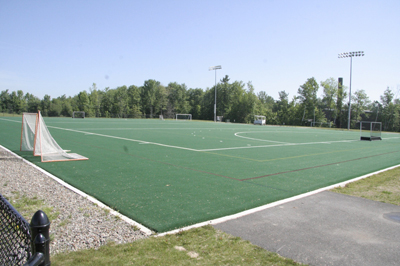Sep 14, 2017Too Hot to Handle

Lots of schools have policies for handling the heat. Burlington (Mass.) Public Schools are adding a unique feature to its protocol by including guidelines for use of its artificial turf fields when temperatures spike.
For the past three years, the city’s Wellness Committee, School Committee, School Administration, and athletic director have been working together to craft the policy. After approving the final language in August, the new safety measures are now being implemented for the 2017-18 school year.
“It is a complex and very important policy,” School Committee member Martha Simon told the Daily Times Chronicle.
The reason for the new guidelines is because artificial surfaces can get much hotter than grass. This creates a potentially dangerous environment for student-athletes, especially during the fall preseason, as well as Burlington’s physical education classes that use the field.
The new policy states that when there is a heat advisory or warning issued by the National Weather Service during the first two weeks of the fall preseason, practices must be scheduled in the early morning or late evening and cannot be more than one hour long. In addition, the turf and/or surrounding track may be used only if the surface temperature is below 100 degrees. Athletic trainers and administrators are expected to use heat guns to determine the surface temperature.
During the fall season, if the National Weather Service issues a heat warning, there will be no practice or play on an artificial turf or track surface between the hours of 11 a.m. to 4 p.m. Practice or gameplay on a grass surface will be permitted but will be limited to one hour in length, and no equipment is to be worn, such as football helmets and pads.
In the event that the heat index is determined to be in the danger zone on a game day according to the National Oceanic and Atmospheric Heat Index chart, Burlington’s athletic director must inform visiting coaches prior to the game about the school’s artificial turf heat policy, meet with game officials to discuss concerns, and schedule an extra five-minute break per half for hydration and rest.
“It looks like a workable policy and not an onerous policy that will be difficult for the athletic department to implement,” said School Committee Vice Chair Tom Murphy, Jr.


